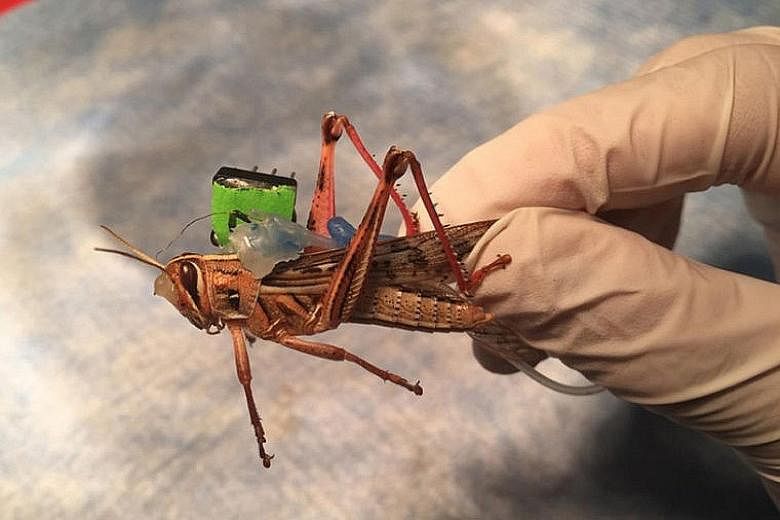WASHINGTON • Locusts came to fame as agents of destruction during the eighth plague of Egypt in the Bible, but some researchers envision a new occupation for the humble insects: cyborg bomb detectors.
The Office of Naval Research has given a team from Washington University in St Louis a US$750,000 (S$1 million), three-year grant to continue its research into turning ordinary locusts into military tools.
Like most insects, locusts are equipped with an exponentially more powerful and sensitive olfactory system than anything humans can artificially replicate. So the idea is to use this pre-existing system to hunt for bombs.
The first step is harnessing the insects' antennae by implanting sensors, which can record and decode certain neural activity, into the locusts' brains.
The plan is to hook those sensors to a small "backpack", which will contain a transmitter to send signals to a receiver hooked up to an LED. If there are explosives, it will light up red. If there aren't any, the light will shine green.
That, though, will be only half of the battle. The other half will be actually learning how to guide locusts to areas that might contain bombs.
The team will be working to create a "tattoo" made from bio-compatible silk that could convert light into heat, according to Engadget, a Web magazine. These would be placed on the locusts' wings so that a laser could be shone at them, heating part of the wing and essentially forcing the insect to fly one way or another. If the laser is shone at the left wing, the locust would go left, for instance.
A prototype of the bomb-sniffing locust is expected within a year, KWMU radio station reported.
WASHINGTON POST

